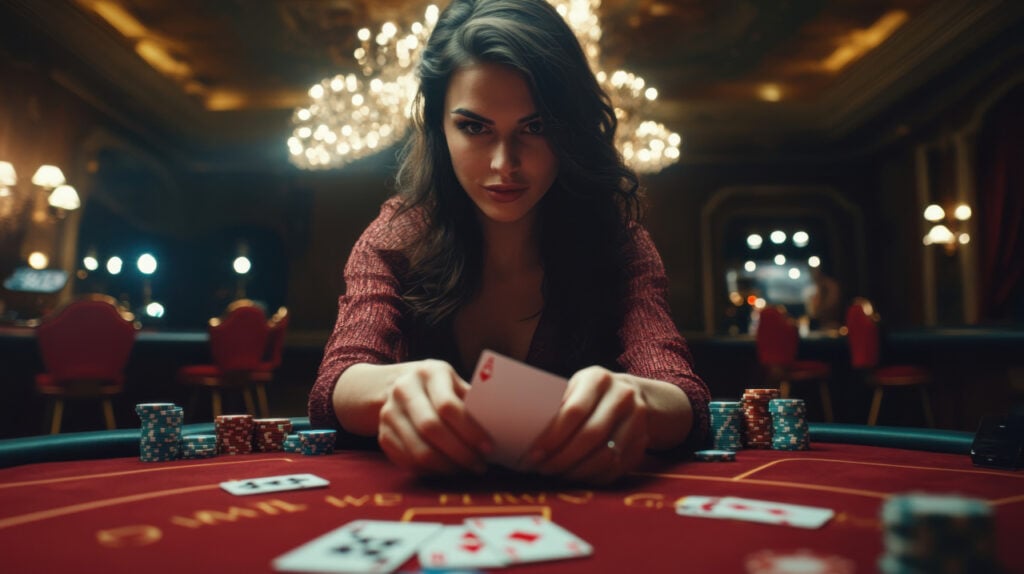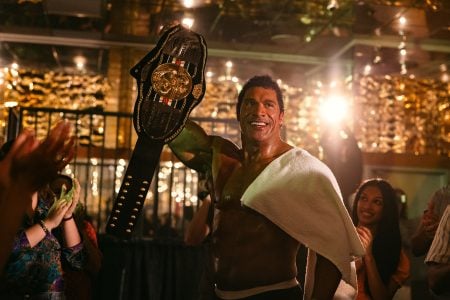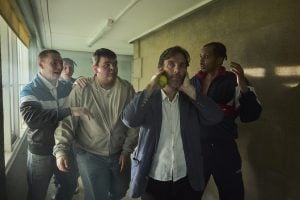A dazzling façade, mysterious rituals, myths of easy luck — Daniel Hoesl’s new film “Un gran casino” presents to the viewer not just the story of the legendary Casino di Campione, but an entire cross-section of the contradictions of modern Europe. Why has the fate of this monumental complex become a mirror for the crises, fears, and temptations of the 21st century? What lies behind the ostentatious luxury and sudden decline of Europe’s largest casino?
Daniel Hoesl is an Austrian director known for his critical view of the culture of excess and inequality. His debut “Soldate Jeannette,” which received the Tiger Award in Rotterdam (2013), established a tradition of exploring social extremes, where wealth becomes both a blessing and a curse. In his collaborations with Julia Niemann, such as “WINWIN” (2016) and the recent “Veni Vidi Vici” (2024), Hoesl examines how material ambitions affect European society.
The choice of Casino di Campione as a new stage is explained by the director’s desire to deconstruct the myth of eternal prosperity in practice: it is here that the illusions of grand success clash with the harsh reality of financial catastrophe (Rotterdam IFF, 2024).
History of Casino di Campione: from espionage to bankruptcy
Casino di Campione, founded in 1917, initially served not only an entertainment but also a political function. During the First World War, under the cover of gambling, Italian intelligence agencies collected information from foreign diplomats arriving on the shores of Lake Lugano (source: historical reference of the municipality of Campione d’Italia).
Over time, the complex became the driving force of the region’s finances: tax revenues made the tiny enclave one of the richest municipalities in Italy. The new building — a nine-story monument of brutalist concrete, erected in 2007 — became an architectural icon of its era. However, by 2018, the flow of visitors had dwindled: the spread of online gaming and poor management decisions led to bankruptcy, and the once bustling halls fell silent (La Repubblica, 2018).
Hoesl as a critic of the capitalist era
“Un gran casino” embodies Hoesl’s signature techniques: satirical mockery and reflections on the nature of power. As in “Davos” (2020), here real facts are combined with poetic metaphors and bold visual experiments. The authors use a hybrid form, blurring the line between documentary and fiction.
Film critics note that the film deliberately avoids a straightforward narrative, instead offering immersion into the atmosphere and mythology of the object (“Screen International”, 2024). Hoesl himself emphasized in an interview: “A casino is a laboratory of modern Europe, where anyone can see how hopes are created and destroyed” (ZDF, 2024).
Structure and allusions: Dante in the casino
An important feature of the film is its division into three thematic chapters: “Inferno” (Hell), “Purgatorio” (Purgatory), “Paradiso” (Paradise). Each section reveals a stage in the life of Casino di Campione — from a rapid rise to a tragic denouement. Archetypal characters appear on screen: the mysterious gambler and a character playing the role of the messenger of the goddess of money. This structure alludes to Dante Alighieri’s “Divine Comedy” — the epic poem of the 14th century, where the author passes through the realms of the afterlife to comprehend the truth. In the film, such references emphasize that the journey through the illusions of wealth and temptation is akin to a spiritual pilgrimage (reference: “The Divine Comedy” is one of the main cultural texts of the European Middle Ages).
Themes and metaphors: faith in money as a new religion
The director draws parallels between the cult status of the casino and temple-like architecture. The viewer observes how the worship of money becomes a new ritual, with croupiers and slot machines acting as attendants and priests.
The film features the concept of the “invisible hand” — a metaphor from the works of Adam Smith, meaning the self-regulation of markets through the participants’ self-interest. Hoesl ironically shows that here this “hand” is deft, but deceptive. The film states: “Money is not subject to the laws of nature. The more you have, the less you feel it.” This idea echoes the theme of the illusion of control and the inevitability of loss, which the authors skillfully play upon (paraphrased from the film’s script).
Visual style
Filming in black and white emphasizes an enigmatic and minimalist atmosphere. Sven Zellner’s cinematography is built on smooth camera movements, focusing not only on rows of slot machines but also on interior details reminiscent of temple décor. Lighting accents and deep shadows create a sense of mystery — as if the viewer enters a zone of sacred rituals. Particular significance is given to details: frescoes in the chapel, marble floors, austere suits, allusions to the cult of luxury and ancient idols.
Criticism, reviews, and target audience
Festival reviewers note: the film is aimed at viewers interested in philosophical questions, not fans of fast-paced action (“Harbour”, IFFR, 2024). Reviews are divided: some call “Un gran casino” a mesmerizing experiment, others complain about the convoluted narrative.
Overall, critics recommend the film to people interested in gambling entertainment. Today, this includes not only fans of land-based casinos, but also those accustomed to playing virtual gambling games. And the number of such people is growing every year in almost every country in the world. Especially in large developing countries, where major international brands are actively entering the market. To understand this, our authors studied several thematic information sites and analyzed search engine results. According to 1win India, the popularity of 1win has been steadily growing for several years. A similar trend is observed with PinUp, Melbet, and Parimatch. Thus, the potential audience for this film is quite large.
Economists in an interview for “Wirtschaftswoche” (2024) emphasize: the artistic interpretation of the casino crisis allows for a broader perspective on the problems of financial instability in European countries. Compared to popular casino films such as Martin Scorsese’s “Casino,” Hoesl’s film eschews drama in favor of metaphor and reflection.
The theme of Casino di Campione acquires special significance against the backdrop of recent crises. Debates about inequality, the growing role of the online economy, the disconnect of elites from reality — all these trends are embodied in the fate of the complex. Similar stories are found in other corners of Europe: from the closure of gambling houses in Monaco to the transformation of Las Vegas. The question arises: have grand casinos become symbols of the entire economy, where the illusion of success turns into unpredictable collapse?
Every element of “Un gran casino” — from architectural details to philosophical allusions — forms a tapestry that tells of the main temptations and anxieties of the modern era. How long will this mirage continue to shine if the system itself needs to be reconsidered?







